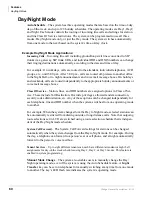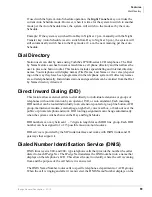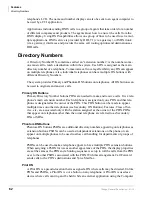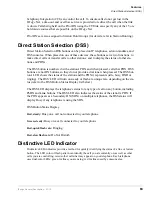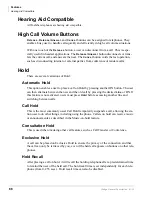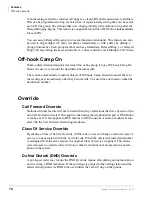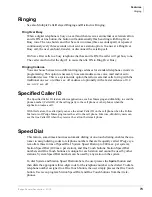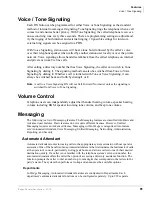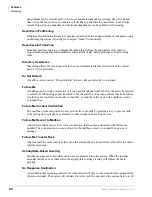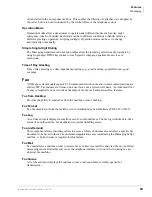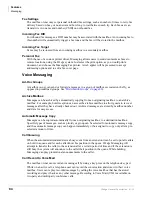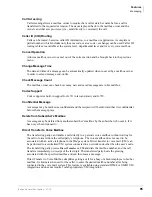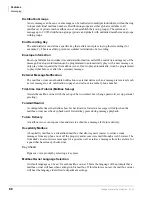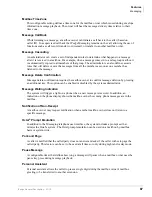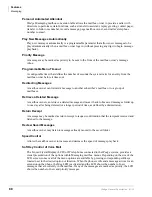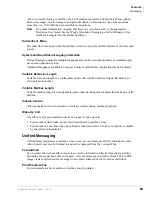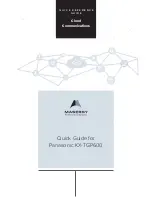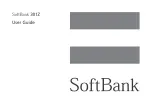
Features
Station Hunting
74
IPedge General Description 01/12
The Web-based User Administration application is required to program System Speed
Dial numbers and can also be used to program Station Speed Dial numbers, but not One
Touch button numbers. Each Station and System Speed Dial number can be assigned a
nine-character name using IP
edge
Enterprise Manager. This name appears in the LCD
when using System Speed Dial and Personal Speed Dial directories (accessed through
DIR
softkey).
One Touch Buttons
One touch buttons enable users to store speed dial and custom feature access sequences on
a single button. When this button is pressed, the stored number is dialed or the feature is
accessed.
You can store frequently dialed numbers, such as three-digit System Speed Dial codes,
onto a One Touch button. This eliminates the need to enter the three-digit code to dial a
System Speed Dial number. Complete telephone numbers up to 32 digits can also be
stored on a One Touch button.
These buttons make it easy to access features that usually require pressing multiple but-
tons and/or dialing special access codes. For example, a user may have to dial an access
code (
#31
) plus a zone number (
5
) to page the warehouse. This sequence can be set on a
One Touch button labeled “Page Warehouse.” Another button can be set to page a particu-
lar group of telephones.
The One Touch button also has a “stop” function that can be entered between two num-
bers, such as a telephone number and security code. When the One Touch button is
pressed, it can speed dial a telephone number, then pause (LED flashes). When the call is
answered, it prompts for a security code. The user can then press the flashing button and
enter the security code. Any number of “stops” can be set to enable dialing multiple num-
bers.
Multiple feature buttons such as
Cnf\Trn
, DN, CO line, etc., can be set on One Touch but-
tons to allow multiple button presses to be stored under one button. This enables tandem
line connections and other call setup sequences to be dialed easily by pressing one button.
Station Hunting
A series of Directory Numbers (DNs) can be organized in groups in such a way that if a
called DN is busy the call will try to ring another DN in the group. If that DN is busy it
will hunt to a third DN, etc. Telephones in the same department, voice mail ports, and
boss/secretary call coverage situations are typical applications for hunt groups. Hunt
group members can remove themselves from the group by placing their station into the Do
Not Disturb mode. The system supports three types of station hunting.
Содержание ID EDGE
Страница 1: ...TOSHIBA Telecommunication Systems Division January 2012 General Description Title Page ...
Страница 6: ...This page is intentionally left blank ...
Страница 12: ...This page is intentionally left blank ...
Страница 24: ...This page is intentionally left blank ...
Страница 128: ...This page is intentionally left blank ...
Страница 134: ...This page is intentionally left blank ...
Страница 142: ...This is the last page of the document ...

